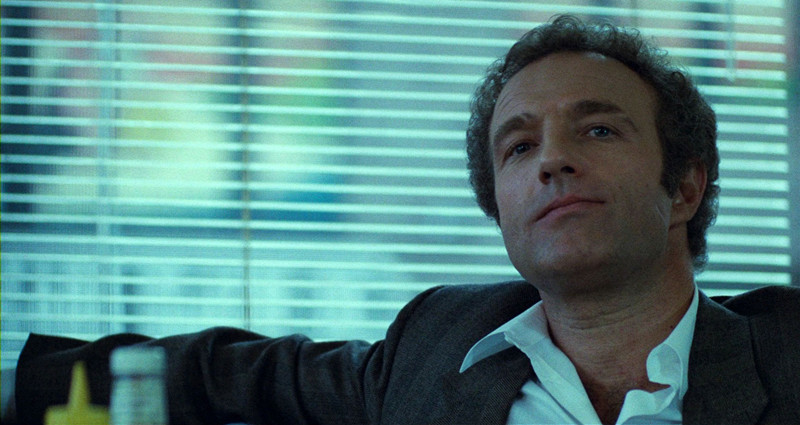
This is the second part of the American Gangster Films series (1970s – 1990s). So, naturally, the films featured in this list, also including the honourable mentions, were among the most popular, influential, and original from a period in American cinema that is known for the establishment of the blockbuster culture (which had started late in the 1970s), for the exploration of ‘yuppies’ (youth oriented films – the rise of the brat pack, “Back to the Future”), and a new revival of science fiction films (thanks to “Star Wars”).
The 1980s was also the golden age of arcade video games and the growth of the industry of technology, but it was also the age of the growing conflict between mainstream cinema and indie cinema, as well as the age of great development for special effects departments and film remakes and sequels. With all that being said, let’s dive into the films that shaped the remains of the gangster genre during the 1980s.
15. The Cotton Club (1984, Francis Ford Coppola)
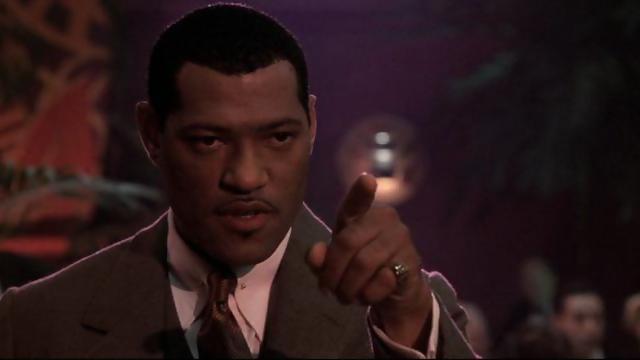
The problematic production of “The Cotton Club” – with its complications with rights, ownership, personal conflicts, financing and so – is perhaps responsible for the film’s loss of value and respect as a piece in modern times.
However, the film remains as a quite interesting project, as it is a collective of stories of people that frequent the club, either as visitors, performers, guests, or owners, providing the audience with a glimpse of the atmosphere of the rumble, frenzy and ecstasy of the time. One cannot help but claim at the end of the film – “what a time to be alive.”
The Cotton Club was a real New York jazz club in the 1930s. It had its golden era during the Prohibition period (1920 – 1933) when it was a segregated facility, albeit frequented by the most notorious names in jazz music, who, for the most part were black musicians – Duke Ellington, Louis Armstrong, Chick Webb and so forth.
And I could babble about what I wanted here but to understand why this film is featured here, one must rely on the words of a film critic at the time of the film’s release: “After all the rumors, all the negative publicity, all the stories of fights on the set and backstage intrigue and imminent bankruptcy, Francis Ford Coppola’s ‘The Cotton Club’ is, quite simply, a wonderful movie. It has the confidence and momentum of a movie where every shot was premeditated — and even if we know that wasn’t the case, and this was one of the most troubled productions in recent movie history, what difference does that make when the result is so entertaining?”
14. Bad Boys (1983, Rock Rosenthal)
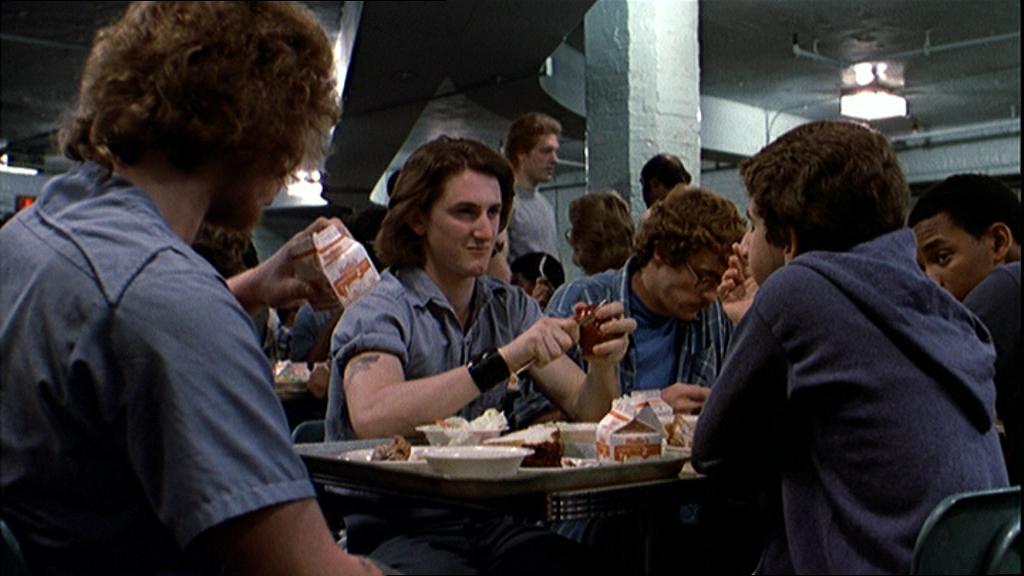
Here’s another take on the concept of gangster: “Bad Boys” (1983). The film follows the life story of Mick O’Brien (Sean Penn), an Irish-American who retains the hope of achieving a role in the Chicago underworld. Despite his young age, O’Brien plans an attempt on his rival’s life, Paco Moreno (Esai Morales), the leader of a rival gang.
However, the plan does not go as quite as planned, leading to tragic consequences; Mick’s best friend is killed and Mick is sent to a Juvenile Correctional Facility because as he tried to escape, he ran over a child who happened to be Paco’s little brother.
“Bad Boys” was part of the ‘youth delinquency film wave’ of the 1980s (other titles were, for instance, “Rumble Fish”, “The Outsiders”, “Drugstore Cowboy”, “Tex”, “River’s Edge”, et al) and in the years since its release, the film has been praised for its intense and exciting rhythm, as well as its consistent performances which were quite noticeable since a great part of the cast was either ‘forgotten actors’ or virtually unknown actors; for instance, Sean Penn, whose career grew only after this film that provided him with favourable reviews.
13. The Pope of Greenwich Village (1984, Stuart Rosenberg)
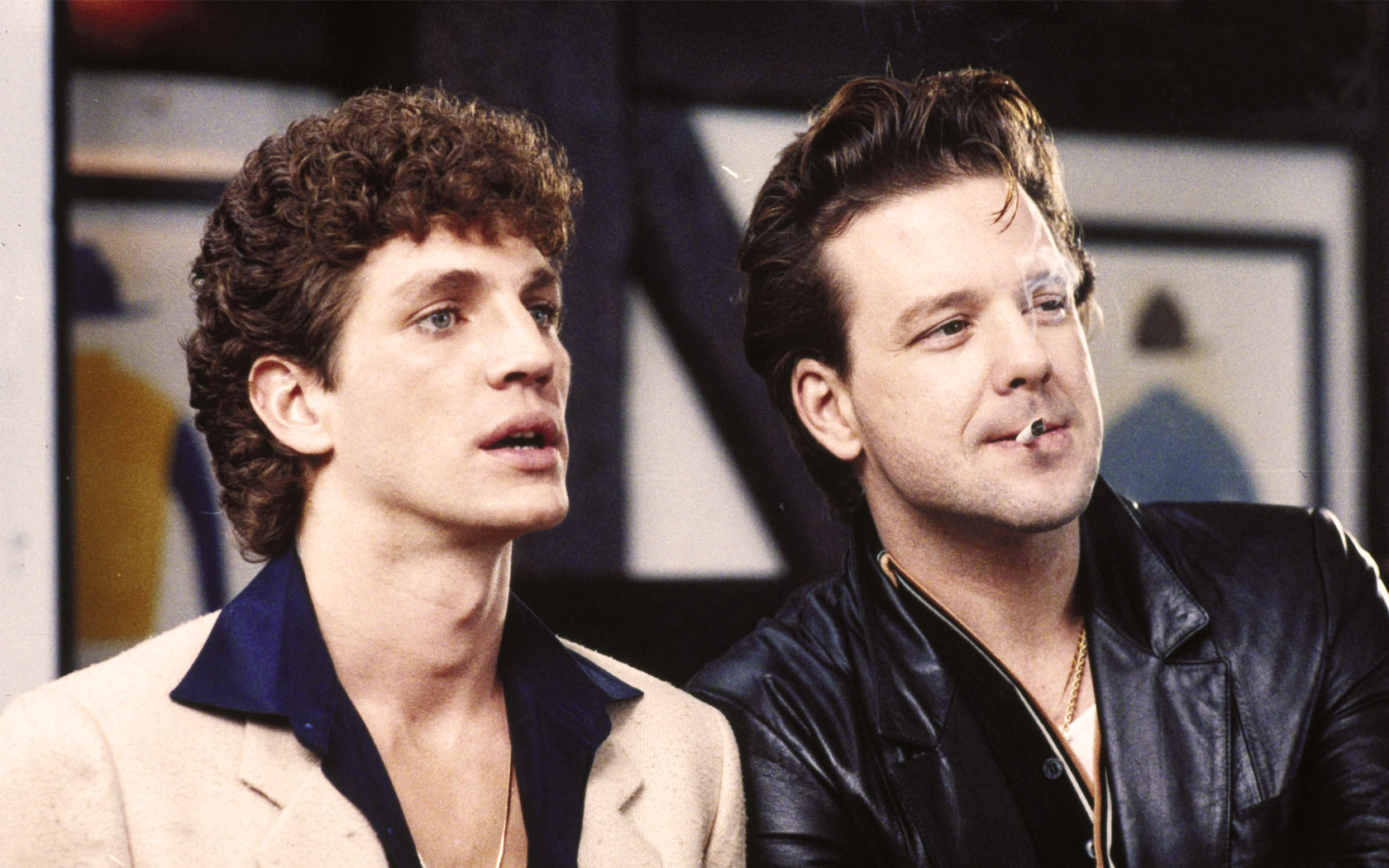
In Little Italy (New York), two cousins, Charlie (Mickey Rourke) and Paulie (Eric Roberts), work at the same restaurant. However, as Charlie dreams of owning his own restaurant, Paulie is caught up with his own schemes, which leads to both men being fired from their jobs.
As Paulie looks for a new way of making money, Charlie hopes to find some way of supporting his pregnant girlfriend (Daryl Hannah). And when Paulie comes up with the ‘brilliant’ idea of robbing the safe of a small company in the neighbourhood, Charlie agrees to participate. The only problem is that the money they rob belongs to the wrong hands – the mob – who immediately sends its people to find out what happened.
As a comedy, the film works well; it also features good performances and perhaps that’s the reason why it became quite successful at the time of its release. Another tale of organized crime told through a lighter and more colourful filter.
12. Prizzi’s Honor (1985, John Huston)
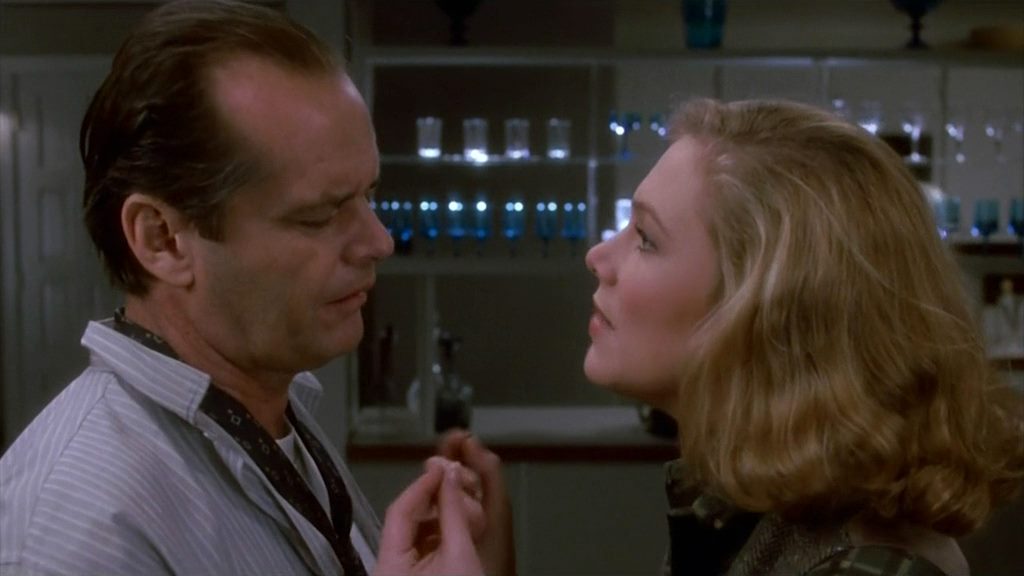
Legendary director John Huston conducts Jack Nicholson as Charley Partanna and Kathleen Turner as Irene Walker in a film where they both play professional assassins who happen to fall in love with each other.
This tragicomedy focuses on the criminal’s interior and exterior drive, meaning, its duties as a hitman and his love for a woman whom he shouldn’t love. What is interesting about this film is the concentration of moral aspects and the ironies they imply; it is not merely about the action, but about reaction and the moral aspects of this singular man.
In fact, individuality is a key word that here produces the tragicomedy effect, because as we understand Charley Partanna throughout the film as Jack Nicholson described him: “He’s not pathological (…) This is his job, his morality. I don’t play killers sympathetically, because I don’t sympathize with killing, but this called for something different because it was black comedy. I wanted him to be funny, but I also wanted you to see him kill somebody and for that to be believable. And I didn’t want it to seem like two different people.”
11. Year of the Dragon (1985, Michael Cimino)
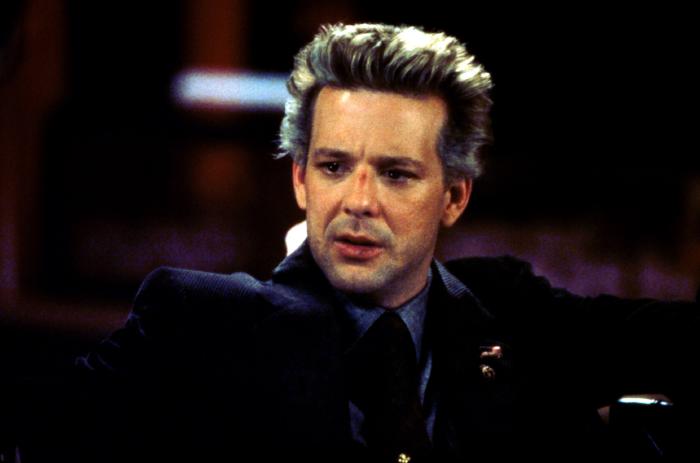
“Year of the Dragon” is set in New York and has a veteran of the Vietnam War and decorated police captain by the name of Stanley White (Mickey Rourke) for its main character. After being successful in dealing with cases connected to the triad and the Italian mafia, Stanley is assigned to deal with the Chinese organized crime in New York’s Chinatown.
The film is considered by many as also being a neo-noir, and in fact, much of its interest comes precisely from its visual aspects that obey the long tradition of noir cinema (light/shadow, hard-boiled characters and contexts). It is virtually a film that was either adored or hated by the audience and critics, because as some praised its power, others called it “a sea of excess and self-importance.”
The film also generated serious issues with the Asian-American communities, particularly the Chinese-Americans, obviously for the depictions the film makes of Chinatown and Asian communities. Interestingly enough, as “Year of the Dragon” was nominated for best foreign film at the César Awards, at home, it received two Golden Globe nominations and five nominations for the Razzie Awards… how about that?
10. The Sicilian (1987, Michael Cimino)
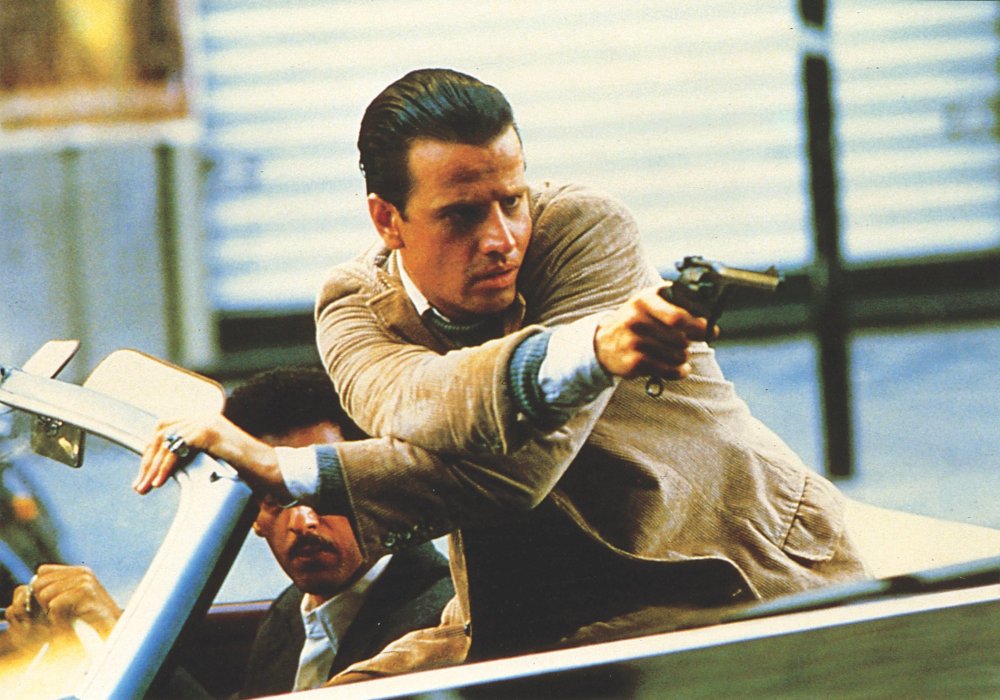
In his next effort, “The Sicilian”, released in 1987, director Michael Cimino concentrated once more on criminally organized backgrounds and institutions. In this adaptation of Mario Puzo’s novel of the same name, the central figure is Salvatore Giuliano (Christopher Lambert), a Sicilian bandit who became a prominent figure in Italy after World War II, particularly in Sicily.
The film follows Giuliano as he reunites his gang and tries to achieve freedom for Sicily from Italian rule in order to make it an American state. The film follows the classic rise of the character as a prominent figure or at a high-level leadership, and as usual, the character is either betrayed by their own greed or betrayed by others; in this case, both sceneries come to live.
Even though the film suffers from a couple of ‘issues’, its position in this list is nevertheless justified with the different look it provides into organized crime. In “The Sicilian”, the connections and influence of the underworld in public and political life are brought to light. All this is in a different background; it is not in America, but right in the heart of Italy, the island of Sicily from where so many immigrants departed at the beginning of the 20th century.
9. Colors (1988, Dennis Hopper)
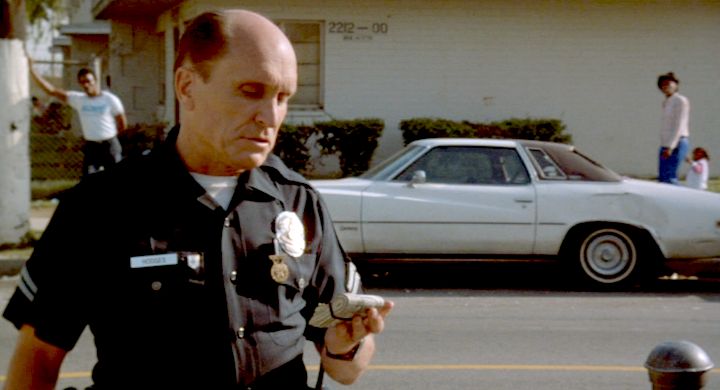
Released 19 years after his other directorial assignment, Dennis Hopper directed “Colors”, a film that takes place in East Los Angeles in the 1980s, when the city was torn apart by racial tensions and conflicts between gangs and local police.
The two central characters of the film are Bob Hodges (Robert Duvall), a veteran police officer in the CRASH department (Community Resources Against Street Hoodlums, 1979 – 2000), and his partner who’s new to the force, Danny McGavin (Sean Penn). Together the officers embark on a quest to stop violence between African-American and Hispanic local gangs.
The film, whose locations are truly a plus when it comes to the overall balance of it, provides a detailed ‘glimpse’ into yet another type of organized crime, one that’s different from all the gloss and dandiness of the Prohibition Era Mafia – street gangs.
It is a very human film which focuses on the racial issues that drove apart American society at the time (and still today), and more importantly, is one of the earliest portraits of street gangs that explores the necessity of its existence, its culture, and how they work as part of the community.